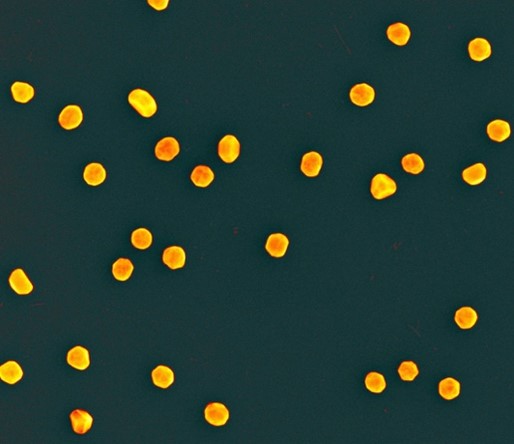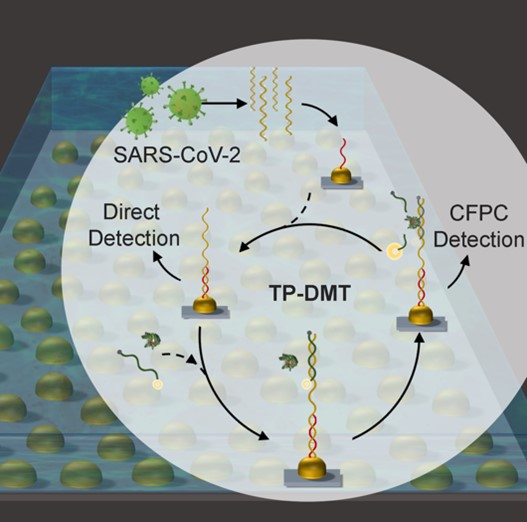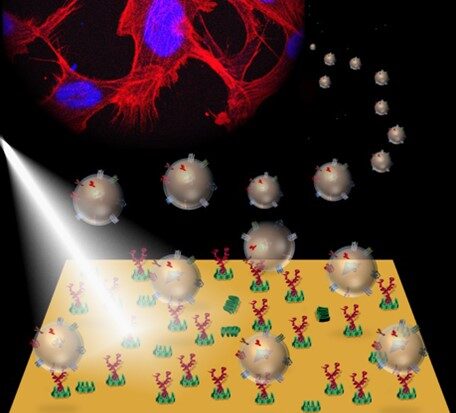Our Research
Research directions:
Plasmonic enhanced light-matter interactions
Versatile nanophotonic biosensor for multidisciplinary applications
Alternative plasmonic/nanophotonic materials
Smart biosensor for robotic systems

Plasmonic enhanced light-matter interactions
Molecular biosensing technology using localized surface plasmon resonance (LSPR) is one of the most promising approaches for point-of-care (POC) diagnostic and point of exposure (POE) monitoring. LSPR sensing systems demonstrate high sensitivity to local variation, including the refractive index changes and molecular bindings. Thus, LSPR is an ideal candidate for real-time and label-free detection of micro- and nano-scale analytes. In practical applications, biosensor devices usually face the problems of non-specific binding and insufficient detection sensitivity. In our ongoing research work, multiplexing biosensing system was introduced to address these shortcomings. For instance, a dual-functional photothermal-assisted plasmonic sensor (PTAPS) system combining the thermoplasmonic effect and LSPR sensing transduction was used for improving spatiotemporal biosensing resolution and robustness. We are investigating more basic optical and optoelectronic principles and harnessing these techniques for wide range of biomedical applications like cancer diagnosis and virus infection monitoring.

Alternative plasmonic/nanophotonic materials
Alternative plasmonic/nanophotonic materialsConventional metallic components such as gold and silver are commonly used in plasmonic and nanophotonic devices because of their good applicability in the visible light region. However, due to the optical losses and low thermo-stability, their applications in some harsh scenarios were limited. Another ongoing research work focuses on developing various alternative functional materials for biosensing and biomedical applications. For instance, transitional metal nitride, as a high-performance plasmonic building block, have been used for phase-sensitive nanophotonic biosensing applications. Their unique bioaffinity toward biotin molecule was discovered. For instance, the biotinylated antibody‐functionalized titanium nitride (BAF‐TiN) can be used for high‐performance label‐free detection of 30–200 nm extracellular exosomal vesicles, which were isolated from a human glioma (brain tumor) cell line. We would like to further develop more biocompatible and biochemical stable nanophotonic materials for in-vivo and implantable biosensing applications.

Versatile nanophotonic biosensing platform for multidisciplinary applications
By leveraging auxiliary units such as virus aerosols sampling system, human exhalation collector, and non-invasive biofluid extractors, the LSPR device can be used as a versatile biosensing platform for precise quantitative biochemical analysis in the fields of biomedical engineering, food safety, environmental risk assessment, disease screening, and POC diagnosis. Therefore, multidisciplinary research will be conducted in our group, including but not limited in the fabrication microfluidics and lab-on-chip device, construction of nanophotonic and optoelectronic system, integration of functional optoelectronic units, development of biosensing signal processing program, and strategies design for specific clinical applications.

Smart biosensor for robotic systems
Light matter interaction introduced multiple physiochemical processes including photothermal effect, photoacoustic effect, photocatalysis, and nonlinear optical conversion. Leveraging these multifunctional processes can promote the development of next-generation biosensing techniques. For instance, smart meta-structures provide facile routes for extending the optical trapping to the nanoscale and allows the plasmonic field to selectively trap biomolecules and nano-vesicles of different sizes. Through these appropriate optical designs, biosensors can also provide abundant biophotonic information, thereby greatly enriching the detection intelligence. Nonlinear optical signal stimulation, intelligent signal extraction, and integration with robotic systems with rapid analysis capabilities can enable more valuable biosensing applications.